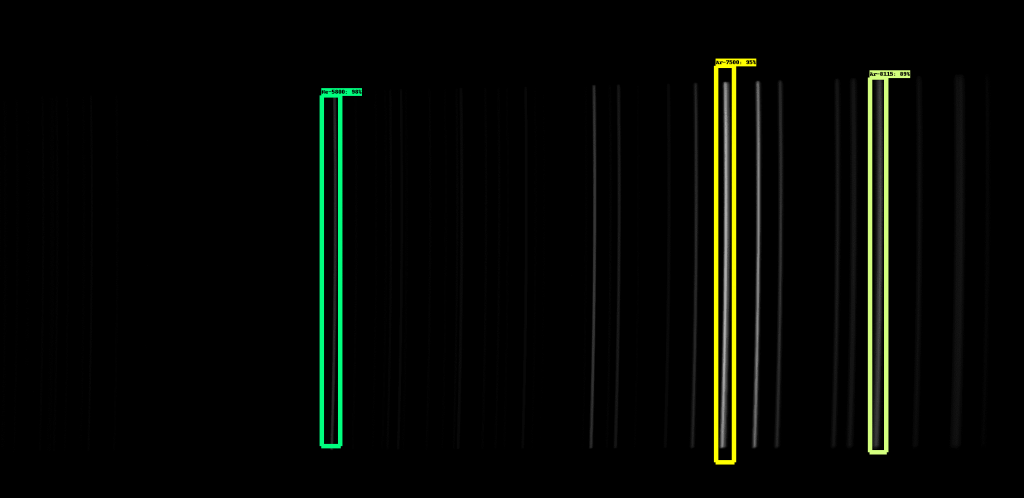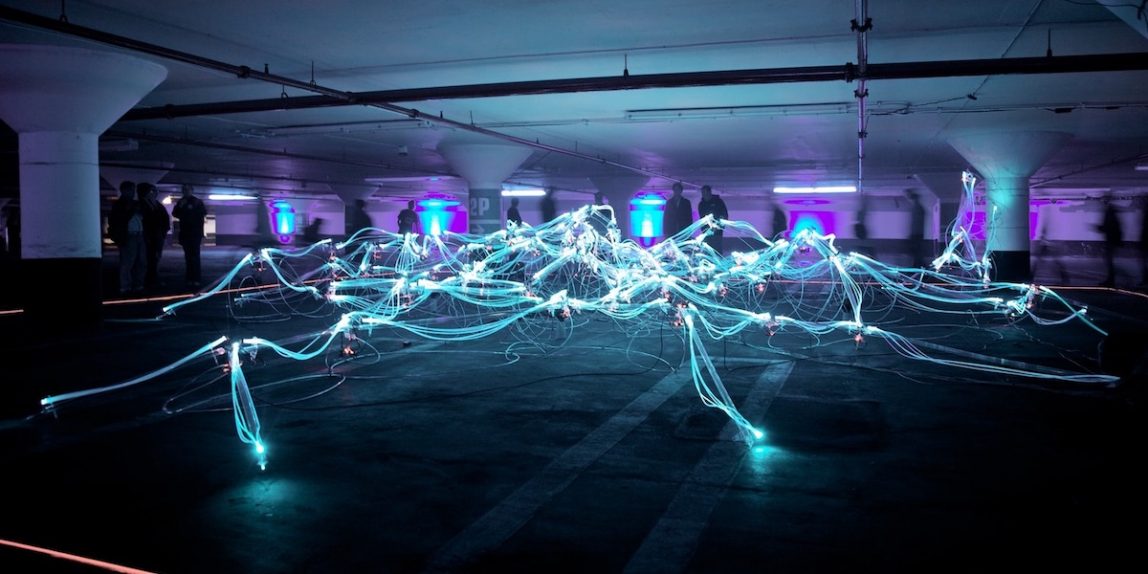An important step in the processing of raw data in spectroscopy is wavelength calibration. The SCCN model, allows to assist the astronomer in this step with an AI.
Giving a scientific dimension to its data
Wavelength calibration in spectroscopy consists of linking each column of pixels in the spectral profile of a target to a wavelength in nanometres or Ångström 1,2. To carry out this operation, it is necessary to use a calibration lamp whose wavelength of the lines already measured in the laboratory is precisely known. From these positions, a polynomial ruler is used to define the dispersion law and therefore the axis of the abscissa in wavelength.
When carried out manually, this operation can be a potential source of error, but above all it can be a source of confusion for a novice astronomer discovering spectroscopy. One of the advantages of an automatic solution is that it allows you to quickly visualise the consistency of the acquired data. This also allows the more delicate aspects of data reduction to be abstracted at the start of practice.
Today’s automatic calibration solutions, especially in the Alpy 600, work very well and on many stripes. (i.e. Demetra – Shelyak). This project is purely experimental, the aim is not to look for alternatives, but to study the possibilities of machine learning technologies associated with the field of amateur spectroscopy.
Automatic calibration by Deep Learning
The principle of the SCCN model is to automatically detect the Neon and Argon lines of the calibration lamp for Alpy 600 spectroscopes using Artificial Intelligence.
The training of the model is therefore done globally by showing it a data set of images of raw NeAr spectra on which a few lines have been identified. The algorithm will then learn how to recognize them.

To find out more…
This AI is based on deep learning, more precisely by using convolution neural networks with the Faster R-CNN object detection model 3,4,5. Another prototype based on the same principle is under study.
Information on the project and its functioning is available at this address :
https://sccn.stellartrip.net/en
Sources and further information
Sources
1 Cochard, F. (2016). Guide pratique pour (bien) commencer en spectroscopie astronomique. Edp Sciences – ISBN-13 : 978-2759817849
2 http://www.astrosurf.com/buil/isis/tutorial/calibration_fr.htm
3 https://arxiv.org/abs/1506.01497
4 https://towardsdatascience.com/r-cnn-fast-r-cnn-faster-r-cnn-yolo-object-detection-algorithms-36d53571365e
5 https://towardsdatascience.com/faster-r-cnn-for-object-detection-a-technical-summary-474c5b857b46
